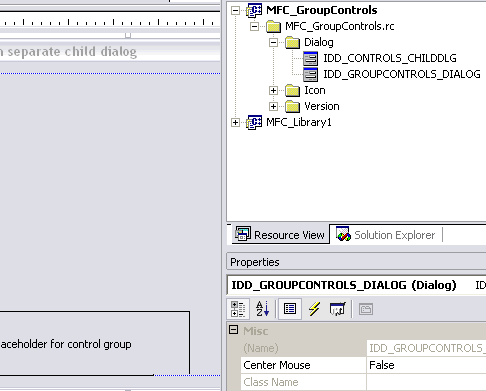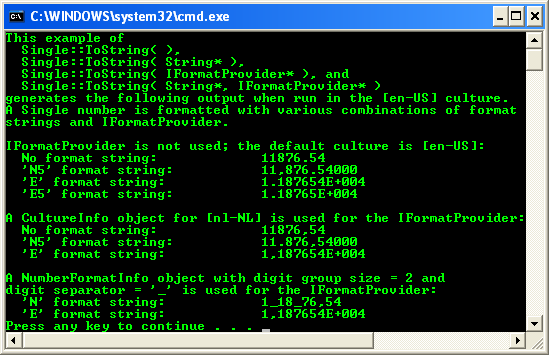

- #C mfc gui tutorial how to#
- #C mfc gui tutorial mac os#
- #C mfc gui tutorial code#
- #C mfc gui tutorial Pc#
- #C mfc gui tutorial license#
Originally developed by British developer Jules Storer, it was acquired by Raw Material Software, a company that develops audio products. It focuses on cross-platform audio, interactive, embedded or graphic applications.
#C mfc gui tutorial license#
This open-source cross-platform library uses a similar license to Qt.
#C mfc gui tutorial code#
(Qt, by comparison, draws its own widgets on each platform, though tries to look as close as possible to the platform by using some low level code for drawing scrollbars and buttons.) JUCE These make applications look more native on Windows, for instance, it will use Windows graphics. It’s similar in many ways to Qt, although some developers prefer it because it uses native SDKs (i.e., Windows built-in routines on Windows, Mac routines on Mac for drawing graphics). wxWidgetsĭeveloper Julian Smart created wxWidgets 24 years ago (making it even older than Qt!) and remains a core developer. On KDE Linux, Qt is the native GUI library, so if you are developing for KDE platforms, then you should consider Qt. Qt Version 5 now handles touch as well as mouse and keyboard handling, and you can add virtual keyboards on X11 and Windows. One of its big strengths is the windowing system, which lets you create user interfaces, and includes advanced features such as displaying charts, data visualizations and maps from third-party providers. This older framework has reinvented itself with its latest incarnation, Qt 5, which is used in everything from mobile apps to automobiles and medical devices. The platform is licensed as free/open source, and available in Indie Mobile, Professional and Enterprise versions starting at $79 per month. Previously owned by Nokia, the current owner is the Finland-based Qt Company. Qt, one of the earlier frameworks, is now 21 years old. The five I’ve chosen are Qt, wxWidgets, JUCE, CEGUI, and CEF (some others-particularly GTK, MFC, and Cocoa-didn’t make the list as they’re not fully cross-platform). In this list, I’ll look at five cross-platform GUI toolkits that are programmed in C++, and are still under active development. You may never need to port your Windows application to Mac or Linux, but at least you know you can. Cross-platform toolkits shield you (somewhat) from those variations and oddities.

Meanwhile, graphics on each operating system are done in completely different ways. Without cross-platform toolkits, you would need to do a substantial rewrite for any other platform just to handle the I/O and user interaction.
#C mfc gui tutorial mac os#
Since then, Mac OS (and to a lesser extent, Linux) have since grown in importance compared to Windows, making it a better investment to create software that can run on all three platforms without requiring a rewrite. It wasn’t until the early ‘90s that graphical toolkits first appeared. Thirty years ago, all I/O was done on character displays.

#C mfc gui tutorial Pc#
It wasn’t until the mid-1980s that PC operating systems developed those sorts of user interfaces, and even after Windows and Apple’s various operating systems became the norm, event-driven programming took a few additional years to catch up.
#C mfc gui tutorial how to#
The tutorials will help you to get started with MFC and they will show you the basic elements of the library and how to do various tasks which you frequently need in developing applications.C++, like Python and many other programming languages,* does not come with a built-in graphical front end. All you need to do is customizing it for your need. But, the MFC application wizard in Visual studio can straightaway generate the window of your application for you. For an example, creating a window and writing the code to handle the messages it receive from operating system is somewhat complicated task and requires a good knowledge on how the operating system handles windows. The MFC classes are written using the win32 API functions and they hide the real API from you and provide you a framework which is much easier to use. MFC provides a framework which is very easy to use and learn than win32 API. With MFC, you do not need to use those complicated API functions. Normally, API functions provide you low level operations and using those are also not easy because they contain many arguments to be passed to them. But, building complex applications using those functions in the win32 API along is not that easy. The Windows operating system provides an API (Application Programming Interface) for the programmer, which consists of functions which the programmer can use for build applications for Windows (win32 API). Using the MFC classes, you can build feature rich applications with nice GUI s very easily.

MFC (Microsoft Foundation Classes) is a rich class library developed by Microsoft, which consists of large number of classes.


 0 kommentar(er)
0 kommentar(er)
